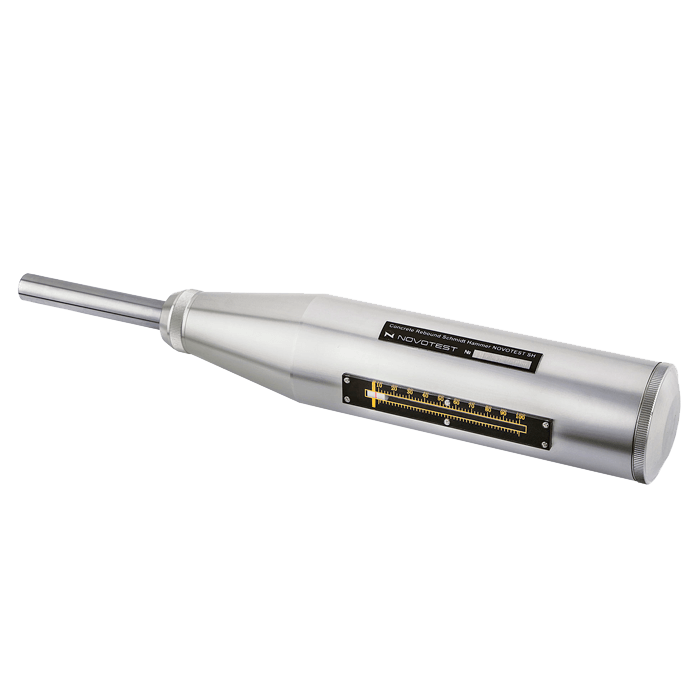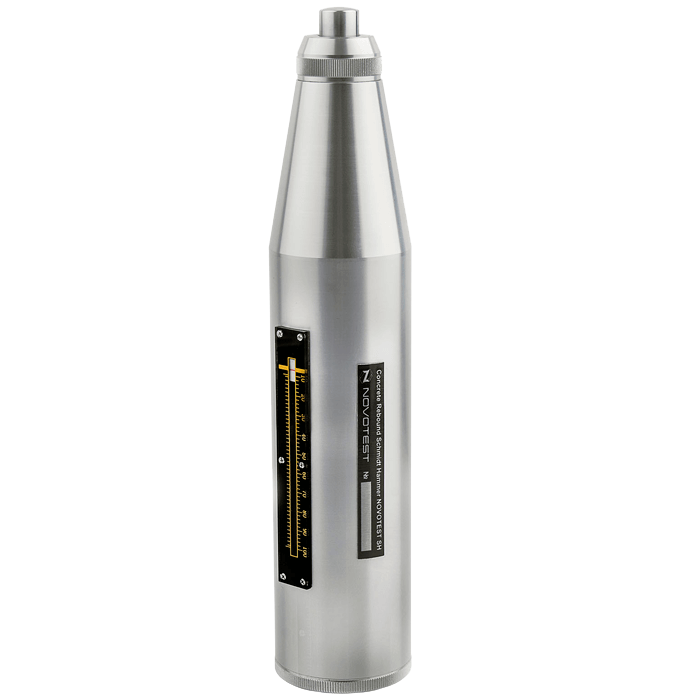

Concrete rebound Schmidt hammer (sclerometer) – is a device for concrete and other building materials strength testing. The most common in the world instrument for measuring the strength of concrete is the Schmidt Hammer. The device is called by the name of the engineer Ernst Schmidt, who invented the construction of the sclerometer.
The method is based on the impacting the impact plunger on the concrete surface with predetermined (normed) impacting energy and subsequent measuring of the height of the striker rebounding. The height of the striker rebounding will be proportional to the strength of concrete. The strength of concrete is determined with the calibration charts that are supplied with the instrument.
Concrete Rebound Schmidt Hammer NOVOTEST SH is very ease in operation, has good reliability of design and high measurement accuracy, so that this method is the most common method of measuring the strength of concrete in the world. The strength testing with the Schmidt hammer is correspond with ASTM C 805; ASTM D 5873 (for rock); DIN 1048, p. 2; ENV 206; EN 12 504-2; ISO / DIS 8045.
Concrete rebound Schmidt hammer (sclerometer) – is a device for concrete and other building materials strength testing. The most common in the world instrument for measuring the strength of concrete is the Schmidt Hammer. The device is called by the name of the engineer Ernst Schmidt, who invented the construction of the sclerometer.
The method is based on the impacting the impact plunger on the concrete surface with predetermined (normed) impacting energy and subsequent measuring of the height of the striker rebounding. The height of the striker rebounding will be proportional to the strength of concrete. The strength of concrete is determined with the calibration charts that are supplied with the instrument.
Concrete Rebound Schmidt Hammer NOVOTEST SH is very ease in operation, has good reliability of design and high measurement accuracy, so that this method is the most common method of measuring the strength of concrete in the world. The strength testing with the Schmidt hammer is correspond with ASTM C 805; ASTM D 5873 (for rock); DIN 1048, p. 2; ENV 206; EN 12 504-2; ISO / DIS 8045.

subscribe to receive promotions and offers, and download the content
You have successfully subscribed to the newsletter
There was an error while trying to send your request. Please try again.
Thanks for your download!
SAVE CLOSE THIS MESSAGE AND CLICK THE PDF YOU WANT TO DOWNLOAD, WE ARE HAPPY TO BE ABLE TO OFFER WHAT YOU WERE LOOKING FOR